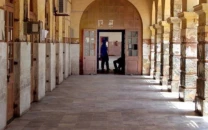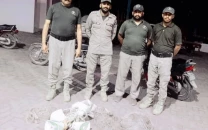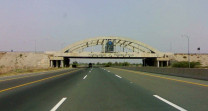Akbari Market spices up the Walled City
Historic centre of trade deals in hundreds of different spices

It is considered one of the largest spice markets in Asia and offers a panorama of colours.
Named after the Mughal emperor Akbar, the wholesale spice market is around 500 years old, also making one of the oldest centres which trades in hundreds of different spices.
Despite being in a relatively dilapidated state, as opposed to the newly renovated royal trail nearby, the colourful market is strong on the nose and a feast for the eyes of all who walk through it.
All sorts of spices such as kaffir lime leaves, kalonji, ajwain, yellow mustard, black pepper, sesame, laksa leaves, red pepper, coriander, lemongrass, bay leaves, cardamom, cassia, cinnamon, cloves, curry leaves, five spice powder, garam masala, cumin, mace, mitsuba, panch phoron, pippali, radhuni, rice paddy herb, saffron, pandan leaf, nutmeg, turmeric and henna can be seen carefully, perhaps even artistically, piled up in the open. This allows customers to even test the samples before buying the product.

However, despite being a location of great historical significance, the absence of any informational plaques or signage makes it difficult for new visitors to figure out if it’s a relatively new addition to the space outside Delhi gate or a centuries’ old market.
The market is also currently facing sanitation and parking issues which not only make it difficult for visitors to navigate through the streets, but are also a serious problem for shopkeepers and residents in the monsoon season.
According to one of the shopkeepers Shaikh Mohsin, the market currently sells thousands of spices and some shops are wholesale, while others can be considered small scale ‘pinsari’ retail stores dealing with day to day orders.
According to other shopkeepers, the spices made available in the market are hard to come by in any other area of Lahore.
Providing historic details of the spice trade centre, Walled city of Lahore Authority’s focal person Tania Qureshi reveals the market was built by Mughal emperor Akbar and established near Dehli gate. The purpose was to create a space for traders and keep them away from main city dwellings.
Historical accounts also tell the story of the East India Company initially requesting Emperor Akbar to handle the spice trade to the British empire on the king’s behalf. However, the courtiers of the Mughal emperor declined the request.
Published in The Express Tribune, August 20th, 2017.



















COMMENTS
Comments are moderated and generally will be posted if they are on-topic and not abusive.
For more information, please see our Comments FAQ